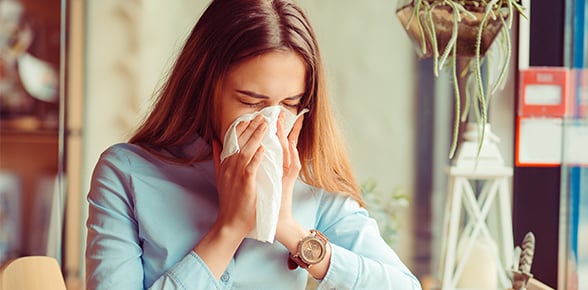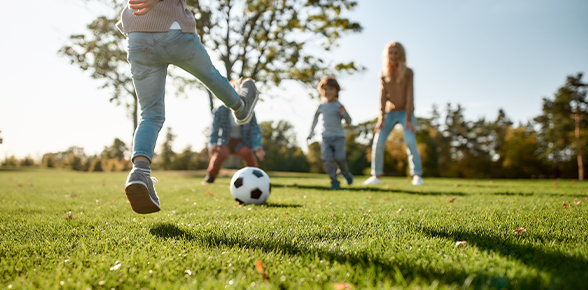For people living with recurring seasonal hayfever, the start of Spring means an increase in allergens and symptoms. With a vast amount of hayfever information available, it's hard to identify the easiest and most effective methods to reduce your discomfort. We’ve sourced the top hayfever hacks that will ease the difficulty associated with managing and treating symptoms.
- Carry tissues with you
- Know your triggers
- Use hand sanitiser
- Use antihistamine nasal sprays
- Wear a face mask
- Wear sunglasses
- Minimise dust and mould in your home
- Consider hayfever medication
- Choose low allergen plants
- Change your clothes when returning home
Hayfever can bring on watery eyes and a runny nose, so always carry a pack of Kleenex® Allergy ComfortTM tissues with you. There's nothing worse than being caught out without one, and you never know when you'll need them (particularly in Spring and Summer).
Hayfever triggers include pollen, pollution, dust mites, animal hair and smoke. When you know what triggers your hayfever symptoms, you can avoid certain plants, freshly cut grass, dusty rooms, or animals as required. Your doctor will be able to help you to identify possible allergic triggers or perform allergy tests.
Carry some hand sanitiser to help prevent the spread of germs leaving the body with hayfever (non-contagious) symptoms, and to prevent touching your face with hands that may have come into contact with dust, grass or animal hair.
It’s important to seek advice from your GP to manage conditions and prescribe treatment. To help relieve congestion caused by allergies, doctors can prescribe antihistamine sprays.
To prevent allergens (including dust, smoke, animal hair, pollen and pollution) from entering the mouth and nose, consider wearing a face mask. A face mask may also stop the unwanted spread of germs from hayfever symptoms like coughing and sneezing.
In bright sunny conditions, protect your eyes from becoming itchy or watery, with a pair of protective sunglasses.
Dampness and dust may trigger an allergic response for those with hayfever. To keep mould under control, regularly wash and dry sheets, clothes and towels, vacuum carpets and allow air to circulate anywhere that mould could build up.
In addition to prescription medicines, there are a number of over-the-counter products that may alleviate symptoms Consider taking a non-drowsy antihistamine if your doctor has suggested this.
While getting out in the garden is generally great for our health, hay fever triggers abound. Certain grasses are the worst culprits but check out this list of low-allergen plants. Ideally, have your lawn mowed by somebody else, and stay inside to reduce unnecessary exposure to pollen. Alternatively, wear a mask and medicate yourself before mowing.
As soon as you return indoors, it’s important to get all the pollen, dust, pollution, or animal hair off your clothes, to keep allergens out of the home. Shower and wash your hair to prevent allergens from getting near your face.
All content and advice are provided on behalf of Sensitive Choice, an initiative of the National Asthma Council Australia, in partnership with Kleenex®. The advice provided in this material is general in nature and is not intended as medical advice. If you need medical advice, please consult your health care professional.
Kleenex® Allergy ComfortTM Tissues are free from lotion, dye & fragrance, and are dermatologically tested with reduced linting for hay fever and allergy sufferers. Grab a box today from Woolworths, Coles, Amazon or your local IGA Store






